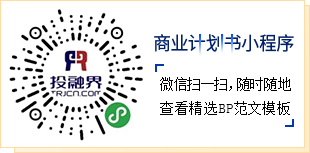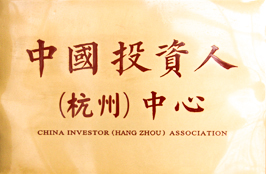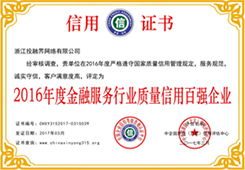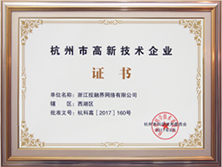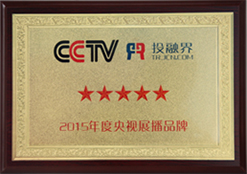有很多小伙伴一直焦虑机器翻译的冲击,担心语言翻译的投入产出比,其实每个行业都会面临技术的冲击,其实最关键的是如何应对。在如日中天的互联网或金融行业里,不具有持续学习的心态,没有跨界混搭的思维,终究也会被淘汰。具体到语言翻译行业也是如此,语言翻译+的技能越多,构建的竞争壁垒也就越高,机器翻译冲击了你,你及时把壁垒筑高一点,最后犯懒的人被淘汰淹死,而持续学习和实践的人最终会站在高处。
今天要向各位从事语言工作强调一个关键的延伸领域:内容写作。事实上很多大型的本地化公司都在朝着内容写作、内容策略和专业咨询的领域延伸,当然以此为借鉴,个体译员也要多多延伸自己的技能领域,在内容写作或者专业领域多多深耕。比如你从事商业领域和金融财经领域的翻译,就可以把商业文案撰写、计划书文本的撰写纳入你的服务范围,这样一来一方面可以促进你对行业翻译的理解,也可以通过延伸服务来跳出舒适区和焦虑区。
在商业领域,有一个非常重要的文本,即商业计划书。今天向大家介绍福布斯中文网发布的一个商业计划书提纲,以中英文对照形式呈现,一方面可以帮助此类文件的翻译,另一方面也可以帮助你掌握商业计划书的写作提纲。商业写作也会在我们近期的商业市场翻译与写作课程中涵盖,欢迎关注。更多商业翻译专题内容,可回复“商业翻译”至译匠公众号查看。
商业计划书提纲:通向成功的23点清单(来源:福布斯中文网)
Business Plan Outline - 23 Point Checklist For Success
Dave Lavinsky, Contributor
If you’re looking for funding for a new or existing business, you need a business plan. Your business plan gives lenders and investors the information they need to determine whether or not they should consider your company.
如果你正在为一项全新的或已有的业务寻求合作,你就需要一份商业计划书。商业计划书能够提供必需的信息,供出资人和合作人判断他们是否应考虑合作你的公司。
Your business plan outline is the first step in organizing your thoughts. And, when you follow the outline below, you ensure your business plan is in the format that prompts investors and lenders to take action.
商业计划书提纲是你组织思路的第一步。如果你按照下面的提纲来制作商业计划书,那么就确保了它从格式上起到促使合作人和出资人采取行动的作用。
In the business plan outline below, you will see the ten (10) sections common to business plans, and the twenty-three (23) sub-sections you must complete.
在下面的商业计划书提纲中,你将看到商业计划书中常见的十个(10)章节,以及你必须完成的二十三个(23)子章节。
Section I – Executive Summary
1 – Executive Summary
The Executive Summary is the most important part of your business plan. Because if it doesn’t interest readers, they’ll never even get to the rest of your plan.
Start your Executive Summary with a brief and concise explanation of what your company does. Next, explain why your company is uniquely qualified to succeed. For example, does your management team have unique competencies? Do you have any patents? Are you the first mover in your market? Does a huge, unmet market opportunity exist? Etc.
Finally, include a synopsis of your financial projections in your Executive Summary. Specifically, include your expected revenues, expenses and profits for each of the next five years, how much funding you are seeking, and the key uses of these funds.
第I章:执行摘要
1:执行摘要
执行摘要是商业计划书最重要的部分,因为如果执行摘要不能引起读者的兴趣,他们甚至不会去看你计划书的其余内容。
在执行摘要的开头,简洁明了地解释你的公司开展的业务。然后,介绍为什么你的公司能够取得成功,它具备哪些独一无二的特质。例如,你的管理团队是否拥有出色的竞争力?你是否拥有专利?你是否是所在市场的先行者?是否存在着尚未被满足的巨大市场机会?等等。
最后,在执行摘要中需要提供财务预测概要。具体而言,需要包括未来五年中,每一年的预期营业收入、成本支出和利润,以及你需要的资源数额和这些资源的关键用途。
Section II – Company Overview
2 – Company Overview
The Company Overview section provides a brief history of your company.
Here you will answer questions such as when and how your
organization was formed, what type of legal entity you are, and accomplishments to date. Importantly, your past accomplishments are perhaps the best indicator of potential future success, so be sure to identify and include all key milestones your company has achieved to date.
第II章:公司概述
2:公司概述
公司概述这一章,简要介绍了你的公司的发展历程。
这一部分需要回答的问题,包括公司的成立时间和成立过程、公司的法人实体类型、以及目前为止取得的成就。
过去的成就非常重要,它可能是评估你公司成功潜力的最佳参考指标,所以一定要确保公司取得的所有关键里程碑都包括在这一部分中。
Section III – Industry Analysis
Your Industry Analysis section has two sub-sections as follows:
第III章:行业分析
行业分析由如下两个子章节构成:
3 – Market Overview
The Market Overview section discusses the size and characteristics of your market. For example, if you are a restaurant, you would include the size of the restaurant market, a brief discussion of sectors (e.g., fast food versus fine dining) and market trends.
3:市场概览
市场概览部分讨论公司所在市场的规模和特征。例如,如果你的公司是一家餐厅,那么这部分就需要包括餐饮行业的市场规模,对细分市场(例如,快餐业vs正餐业)和市场发展趋势的简要讨论。
4 – Relevant Market Size
The relevant market size is a much more specific calculation of your market size. It is the annual revenue your company could attain if it attained 100% market share. Your relevant market size is calculated by multiplying 1) the number of customers who might be interested in purchasing your products and/or services each year and 2) the amount these customers might be willing to spend, on an annual basis, on your products and/or services.
4:相关市场规模
相关市场规模是对市场规模更加具体的计算,它的定义是:如果你的公司取得100%的市场份额,每年能够获得的营业收入。相关市场规模是两个数字的乘积:1)每年可能会购买你的产品和/或服务的消费者数量,以及2)每一年,这些消费者愿意为你的产品和/或服务所支付的费用。
Section IV – Customer Analysis
Your Customer Analysis section has two sub-sections as follows:
第IV章:消费者分析
消费者分析包含如下两个子章节:
5 – Target Customers
Your Target Customers section precisely identifies your current and/or intended customers. Include as much demographic data on your target customers as possible, such as their gender, age, salary, geography, marital status and education.
5:目标消费者
目标消费者这一部分需要精准地定义公司当前和/或计划针对的目标消费者。需要尽可能多地提供目标消费者的统计信息,例如性别、年龄、收入、地域分布、婚姻状况和教育情况。
6 – Customer Needs
In this section of your business plan, specify why customers want or need your products and/or services. For example, do customers care most about speed, quality, location, reliability, comfort, price, value, etc.?
6:客户需求
在商业计划书的这一章,详细阐明消费者需要你的产品和/或服务的原因。例如,消费者最看重的是速度?质量?位置?可靠性?舒适性?价格?价值?诸如此类。
Section V – Competitive Analysis
Your Competitive Analysis section has three sub-sections as follows:
第V章:竞争分析
竞争分析包含如下三个子章节:
7 – Direct Competitors
Direct competitors are companies that fill the same customer need you fill with the same solution. For example, if you operate an Italian restaurant, other Italian restaurants would be direct competitors.
In this section of your business plan, outline who your direct competitors are, and their strengths and weaknesses.
7:直接竞争者
所谓直接竞争者,是指采用与你的公司同样的解决方案,并满足同样的客户需求的公司。例如,如果你经营一家意大利餐厅,那么其它意大利餐厅就是直接竞争者。
在商业计划书的这一章,介绍你的直接竞争者有哪些,以及他们的竞争优劣势。
8 – Indirect Competitors
Indirect competitors are companies that fill the same customer need you fill with a different solution. For example, if you operate an Italian restaurant, a French restaurant would be an indirect competitor.
In this section of your business plan, outline who your indirect competitors are, and their strengths and weaknesses.
8:间接竞争者
间接竞争者虽然也满足同样的客户需求,但和你的公司采用不同的解决方案。例如,如果你经营一家意大利餐厅,那么法国餐厅就是间接竞争者。
在商业计划书的这一章,介绍你的间接竞争者有哪些,以及他们的竞争优劣势。
9 – Competitive Advantages
Importantly, identify your Competitive Advantages in this section. Specifically, state what is it about your company that will allow you to effectively compete (and win) against both direct and indirect competitors.
9:竞争优势
在这一章阐明你的竞争优势至关重要。具体而言,介绍能够支撑你的公司与直接和间接竞争者进行竞争、并取得领先的因素。
Section VI – Marketing Plan
Your Marketing Plan section has four sub-sections as follows:
第VI章:营销计划
营销计划包含如下四个子章节:
10 – Products & Services
Here is where you give the details of the products and/or services your company offers.
10:产品和服务
介绍公司提供的产品和/或服务的详细信息。
11 – Pricing
Detail your pricing here. In particular, discuss how your pricing relates to competition. For example, are you the premium brand? The low cost brand?
Discuss your expected branding ba_sed on your chosen pricing model.
1:定价
详细介绍你的定价策略。尤其需要重点讨论定价策略与竞争态势的关联。例如,你的公司是高端品牌?还是低成本品牌?
根据选择的定价模型,介绍你所预期的品牌定位。
12 – Promotions Plan
Your promotions plan details the tactics you will use to attract new customers. For example, you might choose radio advertising, or online pay-per -click ads, or press releases, and so on. In this section, detail each form of promotions you will use.
12:推广方案
推广方案详细介绍你用来吸引新消费者的策略。例如,你可能选择广播广告、按点击次数收费的网络广告、或新闻稿件,等等。在这一章,详细介绍你会使用的每一种推广形式。
13 – Distribution Plan
Your Distribution Plan outlines the ways in which customers can buy from you. In many cases, they can only buy directly from you, perhaps at your physical location or web address. In other cases, you might have distributors or partners who sell your products or services. In such a case, detail this structure.
13:渠道方案
渠道方案介绍消费者能够购买你的产品和/或服务的方式。多数情况下,消费者只能直接从你的公司购买,他们既可能前往实体渠道购买,也可能通过网络购买。在其它情况下,你可能拥有渠道商或合作伙伴,来销售产品或服务。在这种情况下,需要详细介绍渠道体系的架构。
Section VII – Operations Plan
Your Operations Plan section has two sub-sections as follows:
第VII章:运营方案
运营方案包含如下两个子章节:
14 – Key Operational Processes
Your Key Operational Processes are the daily functions your business must conduct. In this section, you will detail these functions. For example, will you maintain a Customer Service department? If so, what specific role will it fill?
By completing this section, you’ll get great clarity on the organization you hope to build.
14:关键运营流程
关键运营流程是你的业务每天必须执行的工作。在这一章,你需要详细介绍这些工作。例如,你是否需要运营一个消费者服务部门?如果答案是肯定的,那么它具体扮演怎样的角色?
完成这一章节,你将能够极为清晰地阐明你希望建立的组织架构。
15 – Milestones
In this section of your business plan, list the key milestones you hope to achieve in the future and the target dates for achieving them.
Here is where you set goals for specific and critical undertakings, such as when a new product will be created and launched, by when you plan to execute new partnerships, etc.
15:里程碑
在商业计划书的这一章,列举在未来你希望实现的关键里程碑,以及实现里程碑的预期时间节点。
在这一章,你将为至关重要的具体工作设立目标,例如新产品完成研发和发布的时间,计划实施新的合伙关系的时间,等等。
Section VIII – Management Team
Your Management Team section has three sub-sections as follows:
第VIII章– 管理团队
管理团队包含如下三个子章节:
16 – Management Team Members
This section details the current members of your management team and their backgrounds.
16:管理团队成员
这一章详细介绍当前管理团队的成员及其背景。
17 – Management Team Gaps
Particularly if you’re a startup venture, you will have holes in your team; roles that you’d like to fill later. Identify such roles here, and the qualifications of the people you will seek later to fill them.
17:管理团队空缺
尤其当你是一家创业公司时,你的团队中肯定存在空缺的职位;存在你希望在未来能够补充的角色。在这里具体介绍空缺的职位,以及你希望未来能够填补空缺的候选人所具有的资格条件。
18 – Board Members
If you maintain a Board of Advisors or Board of Directors, detail your Board members and their bios in this section.
18:董事会成员
如果你的公司拥有顾问委员会或董事会,在这一章详细介绍董事会成员及其简历。
Section IX – Financial Plan
Your Financial Plan section has four sub-sections as follows:
第IX章:财务规划
财务规划包含如下四个子章节:
19 – Revenue Model
As simple as it seems, this section of your business plan gives clarity on how you generate revenues. Do you sell products? Do you sell advertising space? Do you sell by-products, like data? Do you sell all of the above?
19:营业收入模型
这一章很简单,清晰地阐明你的公司如何产生营业收入。你的公司销售产品?销售广告位?销售副产品(比如数据)?还是以上全部都在你的公司的销售范畴?
20 - Financial Highlights
Your full financial model (income statement, balance sheet and cash flow statement) belong in your Appendix, but in this section you’ll include the highlights. For instance, include your revenues, key expenses, and projected net income for the next five years.
20:财务概要
完整的财务模型(损益表、资产负债表和现金流量表)应该放在附录中,但是这一章需要包括财务概要。例如,未来五年的营业收入、关键费用支出和预期净利润。
21 – Funding Requirements/Use of Funds
If you are seeking funding for your company, detail the amount here, and importantly for what you will use the funds.
21:合作要求/资源使用
如果你在为公司寻求合作,这一章需要详细介绍需要的金额,并且资源用途也至关重要。
22 – Exit Strategy
Particularly if you are seeking equity funding, detail your expected exit strategy. The most likely exit strategy is to sell your company to a larger firm. If so, detail the types of firms that might be interested in purchasing you and why. List the specific names of potential acquirers if applicable.
22:退出策略
尤其是当你寻求股权合作时,需要详细阐述你预期的退出策略。可能性最高的退出策略是将你的公司卖给更大的公司。如果是这种情况,详细介绍可能对收购你的公司感兴趣的公司类型,及其可能收购的原因。如果可能的话,列举潜在收购者的名称。
Section X – Appendix
23 – Supporting Documentation
As mentioned above, your full financial model (income statement, balance sheet and cash flow statement) belong in your appendix.
第X章:附录
23:支持性文件
如上文所述,完整的财务模型(损益表、资产负债表和现金流量表)应该放在附录中。
Likewise, include any supporting documentation that will help convince readers your company will succeed. For example, include customer lists, awards, and patents received among others.
类似地,任何能够帮助你说服阅读者、使他们相信你的公司能够取得成功的支持性文件都应放在附录中。例如,客户名单、所获奖项,尤其是所获专利。
I hope this business plan outline has helped you organize your thoughts and answer the key questions needed to start and grow a successful business. While twenty-three sections seems like a lot, if you complete them one at a time, you can make progress and finish your entire plan quickly and effectively.
我希望这份商业计划书提纲能够帮助你理清自己的思路,并为建立和经营一份成功的事业所必需回答的关键问题带来答案。尽管二十三章的篇幅看起来过长,但如果每次完成一个章节,你也能够取得进展,并快速有效地完成整个计划书。
















